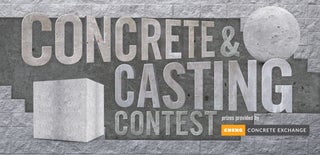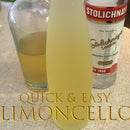Introduction: Easy Build Heat Treat Furnace - No Power Tools Required.
Steel is an amazing material. Take some pure iron and put in a bit less than 1% carbon and you've suddenly got a markedly different alloy. Steel is generally stronger than pure iron, and can be made to be harder as well. Mix in small amounts of other elements and you can make it resist rust, make it flexible and springy, make is super hard and increase it's tensile strength.
In order to get the most out of steel, it generally needs to be heat treated. Different types of steel require different treatments, however the general outline is that it must be heated up to above a certain critical temperature, held at this temperature for a period of time and then rapidly cooled by dunking it (quenching it) in a liquid such as oil or water. Finally, after the hardening process, it usually needs to be tempered - whilst hardening makes it considerably harder, it also makes the steel more brittle as well. Tempering restores some flexibility and springiness to the metal.
I've made a small furnace for heat treating steel, with a MAP gas torch, it will should hot enough to heat steel to a cherry-red heat.
From a few online guides, to heat treat 1084 steel, you need to get it up to around 815°C (around 1500°F).
I'm using some flat stock that is around 3mm thick (0.125") so I probably need to hold the steel at the hardening temperature for 5-7 minutes.
The goal of this furnace was to use some readily available materials to make an insulated enclosure that can withstand that kind of heat and keep the heat in one place long enough for the metal to reach these temperatures.
As guide to the correct temperature, you can heat until the steel is red-hot and then try a magnet on the metal. If the magnet is attracted to it, you need to go hotter. Once iron (which steel is predominately made of) reaches 770°C (1418°F) it hits it's Curie Temperature - this is the temperature at which the metal undergoes a significant change in it's magnetic properties, below this temperature a magnet is attracted to the steel, above this temperature the magnet is no longer attracted. This isn't quite hot enough for the 1084 steel to reach it's optimum hardness, so we need to go just a bit hotter, from a deep cherry red to a slightly more orange colour.
Step 1: What Will You Need
I went to my local hardware store and was able to get most of these items in one trip.
I started out with a block of Hebel which is a brand of Autoclaved aerated concrete common here in Australia.
Concrete is not ideal for this as it breaks down under intense heat, however it was a lot easier to find than aerated fire bricks and will get me through at least a few heat treat cycles.
I got a MAPP Gas torch with a diffused flame - MAPP gas burns a lot hotter than regular LPG (Propane). Look for the yellow cylinder. Make sure the torch attachment you get is suitable for MAPP Gas.
I picked up a few other misc items, some small 90° brackets, some tie wire and a respirator (you really don't want to get concrete dust in your lungs).
For tools, I had everything I needed lying around - an old hand saw (do not use your good saw for this!), some putty knives/scrapers and a large masonry drill bit (big enough to drill a hole to accept the burner for your gas torch)
Step 2: Shaping the Chamber
My Hebel blocks were pretty long, so I was able to cut one in half and still have room to make a big enough chamber. Hebel cuts very easily, even with a blunt saw.
I wanted the chamber to be roughly cylindrical, so I started by putting the two blocks together and sketching an oval/circle on the end. Those marks on the bricks were from the rust on my old saw.
Once I'd worked out the size of the chamber at the end, I drew some guide lines down the blocks so I knew where I had to remove the material.
Step 3: The Fun Begins!
Whist the Hebel is pretty easy to cut, you there's a fair amount you want to remove - it's also very brittle so you want to be careful that you don't attack it too enthusiastically.
I found that the best way to dig it out was to make some parallel cuts with the saw and then break out large chunks of it, and then scrape and smooth it down with the putty knife.
In retrospect, it would be a lot easier if you were willing to cut the back of the chamber off and then re-attach it again, but it would be difficult to seal it up so I avoided doing this.
Step 4: Test Fit
Once you've scooped the middles out of the blocks, put it together and make sure everything lines up.
At this stage I also rubbed the blocks against each other in a circular motion to smooth the mating surfaces so hopefully there would be less heat lost down the seam.
Step 5: Drill Hole for the Gas Torch
Make sure you've got a drill bit as large as, or slightly larger than, the burner on your torch. Drill a hole through the side at an angle - you want to come in at a tangent to the top of the chamber - the idea is that this will help the heat swirl around and even out the temperatures inside the chamber.
Step 6: Insert the Torch
Here you can see the torch inserted into the hole. I had the hole on the top while I was testing it, however when I use it for heat treating, I'll flip everything over and have it on the bottom.
In the second photo, I've got the torch in too far, but this was just so you could see it more clearly.
Step 7: Tie It All Together
I got some small angle brackets at the hardware store. They had these long ones for $2 and some short ones the size I needed for $1.75. As I needed 8 brackets, and I could cut down two of the long brackets to make 8 small ones, I got the long ones. I also got some tie wire - this wire is galvanised which is usually a big no-no when using with anything that gets hot. Burning zinc produces toxic fumes. The outside of this oven isn't going to get hot enough for this to be an issue.
Wrap a couple of strands of wire around the blocks to hold them together, and use the angle brackets to protect the soft corners of the blocks from the wire digging into them.
Step 8: Fire!
And you're done, time to light the torch, put it in the hole in the side and see how hot it gets inside.
Within a few minutes, I was able to get a test piece of metal to a dull red heat.
I don't think it will be able to maintain this temperature for the whole cavity in the blocks, so the next thing I'm going to do is slice a flat piece off another Hebel block and make a door for the front to keep the heat in.

Runner Up in the
Concrete and Casting Contest

Participated in the
Epilog Contest VII













